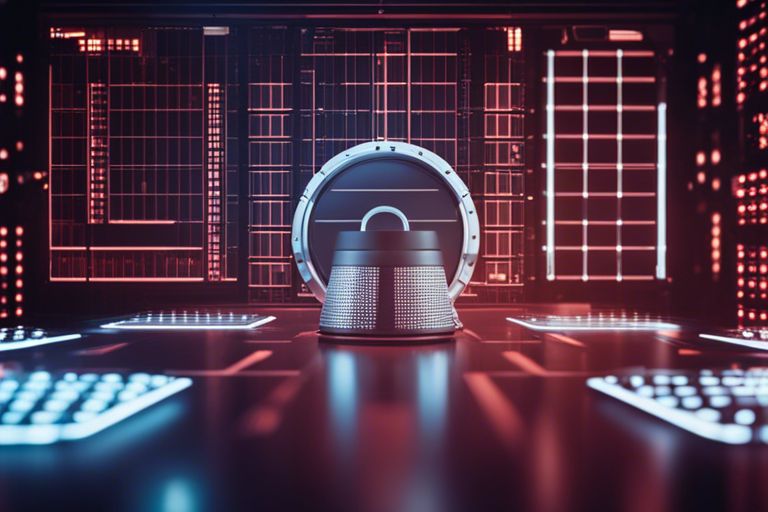You may think you are safe online, but the truth is, the cyber threats are constantly evolving, becoming more sophisticated and dangerous each day. In this digital age, where we rely heavily on the internet for various tasks, it is crucial to understand how cyber solutions work to safeguard us from these evolving online risks. From ransomware attacks to phishing scams, the threats are real and ever-present. To navigate this complex landscape, it is necessary to stay informed and proactive. Learn more about Navigating the Evolving Landscape of Cyber Threats to protect yourself and your digital assets.
Key Takeaways:
- Cyber solutions are designed to safeguard against evolving online risks: Cyber solutions utilize advanced technologies such as artificial intelligence, machine learning, and behavior analysis to detect and prevent cyber threats in real-time.
- Continuous monitoring and updates are imperative: Cyber solutions must continuously monitor online activities, identify new threats, and update their security measures to stay ahead of evolving risks.
- Cybersecurity awareness and training are crucial: While cyber solutions provide proactive protection, cybersecurity awareness and training for individuals and organizations remain crucial in preventing cyber attacks and mitigating risks.
Core Components of Cybersecurity
Threat Detection and Monitoring
You understand that in the ever-evolving landscape of cyber threats, proactively identifying and mitigating risks is crucial. Threat detection and monitoring involve continuously monitoring networks, systems, and applications to detect any unusual activity or potential security breaches. By leveraging advanced technologies such as AI and machine learning, organizations can stay ahead of sophisticated threats and prevent them from causing significant damage.
Incident Response and Management
The importance of a robust incident response and management strategy cannot be overstated. In the event of a security breach or cyber attack, how an organization responds can make a critical difference in minimizing the impact and recovering quickly. Having a well-defined plan in place, including clear roles and responsibilities, enables swift and effective action to contain the incident and restore normal operations.
Another vital aspect of incident response and management is conducting thorough post-incident analysis. This involves analyzing the root cause of the incident, evaluating the effectiveness of the response, and implementing measures to prevent similar incidents in the future. Regularly testing and updating the incident response plan is vital to ensure readiness to combat emerging threats.
Advanced Cyber Solutions
Any
- Artificial Intelligence in Cybersecurity
- Blockchain for Enhanced Security
The Role of Artificial Intelligence in Cybersecurity
The integration of Artificial Intelligence (AI) in cybersecurity has revolutionized the way organizations protect their sensitive data and systems. AI-powered solutions can detect and respond to cyber threats in real-time, significantly reducing response times and minimizing potential damages. With the ability to analyze vast amounts of data and patterns, AI algorithms enhance threat detection capabilities and predict potential risks before they materialize.
On Blockchain for Enhanced Security
It is evident that Blockchain technology is becoming a cornerstone for enhanced security measures in the digital landscape. Blockchain’s decentralized nature and cryptographic algorithms provide a secure platform for transactions and data sharing. One of the key strengths of Blockchain is its immutable ledger, which ensures that once data is recorded, it cannot be altered. This feature makes it extremely challenging for cyber attackers to manipulate or corrupt data, enhancing overall security levels.

Best Practices for Cyber Hygiene
Many cyber solutions work to safeguard against evolving online risks by following best practices for cyber hygiene. These practices are important for maintaining a secure digital environment and protecting against a variety of cyber threats.
Regular System Updates and Patching
On a regular basis, it is crucial to ensure that all systems and software are up to date with the latest security patches. Regular system updates and patching help to address known vulnerabilities and prevent attackers from exploiting these weaknesses to gain unauthorized access to your systems.
Employee Training and Awareness Programs
Training your employees on cybersecurity best practices and raising awareness about potential threats can significantly strengthen your organization’s defense against cyber risks. Employee training and awareness programs help educate staff about how to identify and respond to phishing attempts, social engineering tactics, and other common security threats.
Cyber criminals often target employees as the weakest link in an organization’s security posture. By investing in employee training and awareness programs, companies can empower their staff to act as the first line of defense against cyber threats, ultimately reducing the risk of data breaches and other security incidents.
The Future of Cybersecurity
Predicting and Preparing for Emerging Risks
An vital aspect of the future of cybersecurity is the ability to predict and prepare for emerging risks. Cybersecurity professionals must continuously anticipate potential threats and vulnerabilities to stay one step ahead of cybercriminals. By leveraging advanced threat intelligence, machine learning, and AI technologies, organizations can proactively identify and mitigate risks before they escalate.
The Role of International Collaboration in Cyber Defense
Any effective cybersecurity strategy must involve international collaboration to combat the increasingly sophisticated and global nature of cyber threats. Cyber-attacks do not adhere to national borders, necessitating close cooperation among nations, sharing of threat intelligence, best practices, and coordinated response efforts. International partnerships can strengthen defenses and enhance the collective ability to respond to cyber incidents swiftly and effectively.
Collaboration among countries also enables mutual support during cyber crises and facilitates the development of international cybersecurity frameworks that set guidelines for responsible behavior in cyberspace. By working together, nations can create a more secure and resilient digital ecosystem for global economies and societies.

Summing up
With these considerations, it is clear that cyber solutions play a crucial role in safeguarding against evolving online risks. By utilizing advanced technologies such as artificial intelligence, machine learning, and encryption, organizations can proactively defend against cyber threats and protect their sensitive data from potential breaches. It is imperative for businesses to invest in robust cybersecurity measures and stay vigilant in adapting to the constantly changing landscape of online risks to ensure a secure digital environment for themselves and their customers.
FAQ
Q: What are evolving online risks?
A: Evolving online risks include cyber threats such as malware, phishing attacks, ransomware, and data breaches that constantly adapt and change to exploit vulnerabilities in systems and networks.
Q: How do cyber solutions safeguard against evolving online risks?
A: Cyber solutions employ various technologies such as firewalls, encryption, intrusion detection systems, and antivirus software to detect, prevent, and respond to evolving online risks. These solutions continuously monitor, analyze, and mitigate threats to protect data and systems from cyber attacks.
What are some best practices for safeguarding against evolving online risks?
A: Some best practices for safeguarding against evolving online risks include regular software updates, strong password policies, employee training on cybersecurity awareness, implementing multi-factor authentication, and conducting regular security audits and risk assessments to identify and address vulnerabilities proactively.



